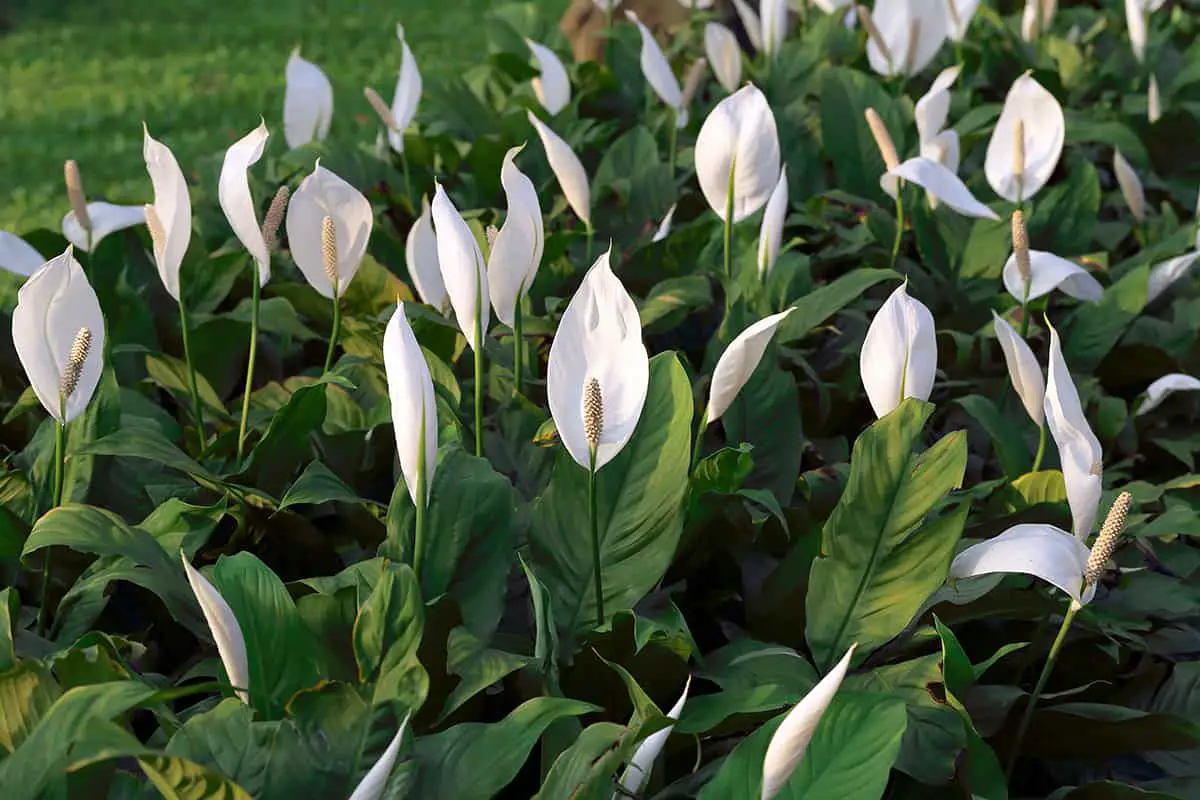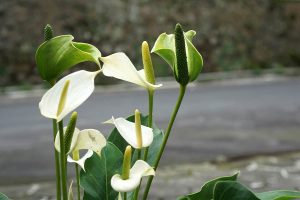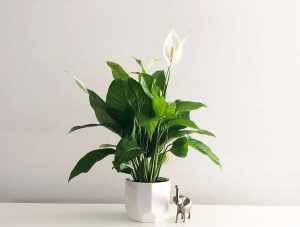Imagine sipping your morning coffee, sunlight streaming through the window, casting a warm glow on the lush, white blooms of your peace lily. It’s a picture-perfect scene, but perhaps those blooms have been scarce lately. If you’re looking to transform your peace lily from a green friend into a white blossom spectacle, you’re in the right place.
Here’s how to encourage your peace lily to produce more blooms, ensuring those serene mornings are accompanied by the sight of thriving, floral elegance.
Table of Contents
Optimal Environment To Get Your Peace Lily to Bloom
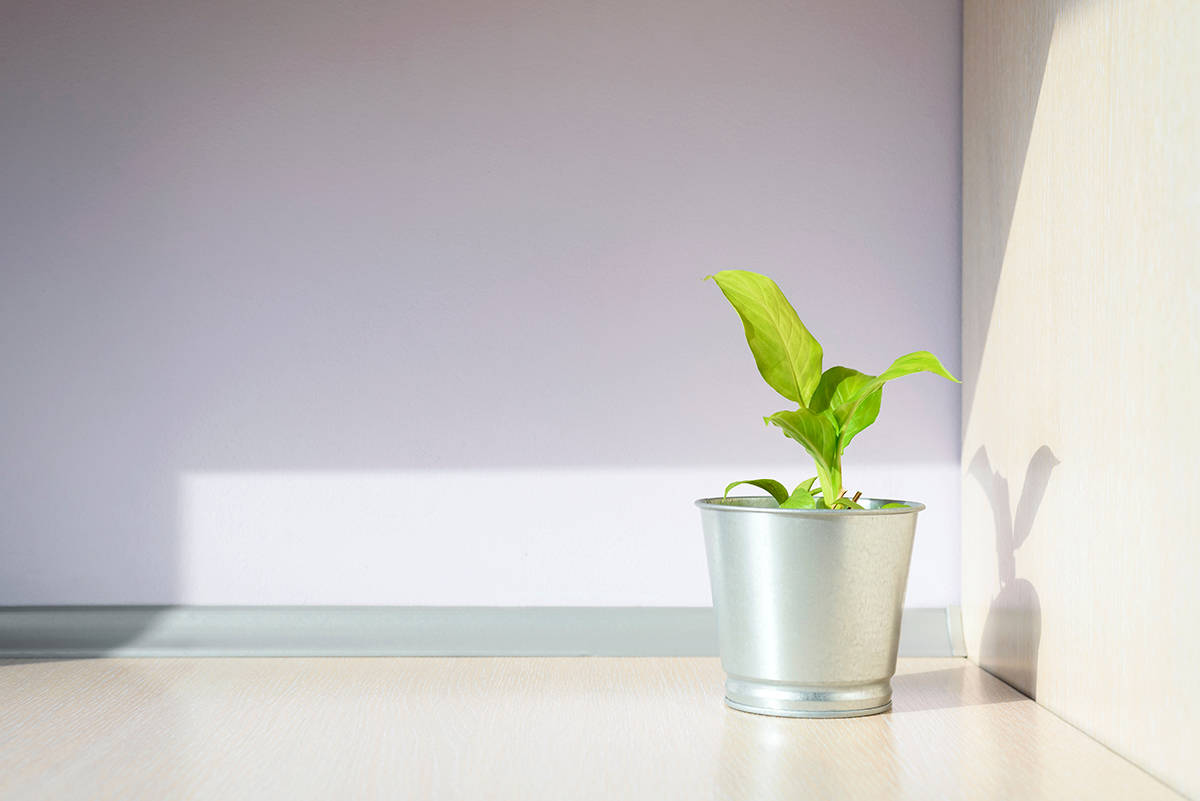
Blooming Season
The main blooming season for peace lilies is spring and early summer. During this time, your plant is more likely to produce blooms. Pay attention to its needs, such as lighting and watering, to encourage more flowers.
Light
Peace lilies benefit from both natural and artificial light. Bright, indirect sunlight is perfect for peace lilies, while harsh, direct light can damage their leaves. Artificial lighting, like fluorescent lights, can also be used to promote growth. If using artificial light, place the plant about 6 feet away from the light source.
A peace lily requires around 12 to 16 hours of daily light for optimal growth. If the plant is placed in a low-lit area, it may still grow but expect fewer flowers.
Monitor the plant growth and adjust the lighting if necessary. Regularly check the leaves for any signs of damage or stress, and provide supplemental artificial light if needed.
Watering
Watering your peace lily correctly is essential for more blooms. Water your plant weekly and keep the soil moist but not soggy. Make sure to let the soil dry out a bit before watering again. Over-watering can lead to root rot, which hinders blooming.
Humidity
Peace lilies thrive in higher humidity levels, usually around 40-50%. To maintain this ideal humidity, place your peace lily on a tray filled with pebbles and water. As the water evaporates, it increases humidity around the plant. Another method is to use a humidifier near your peace lily to maintain consistent humidity levels.
Temperature
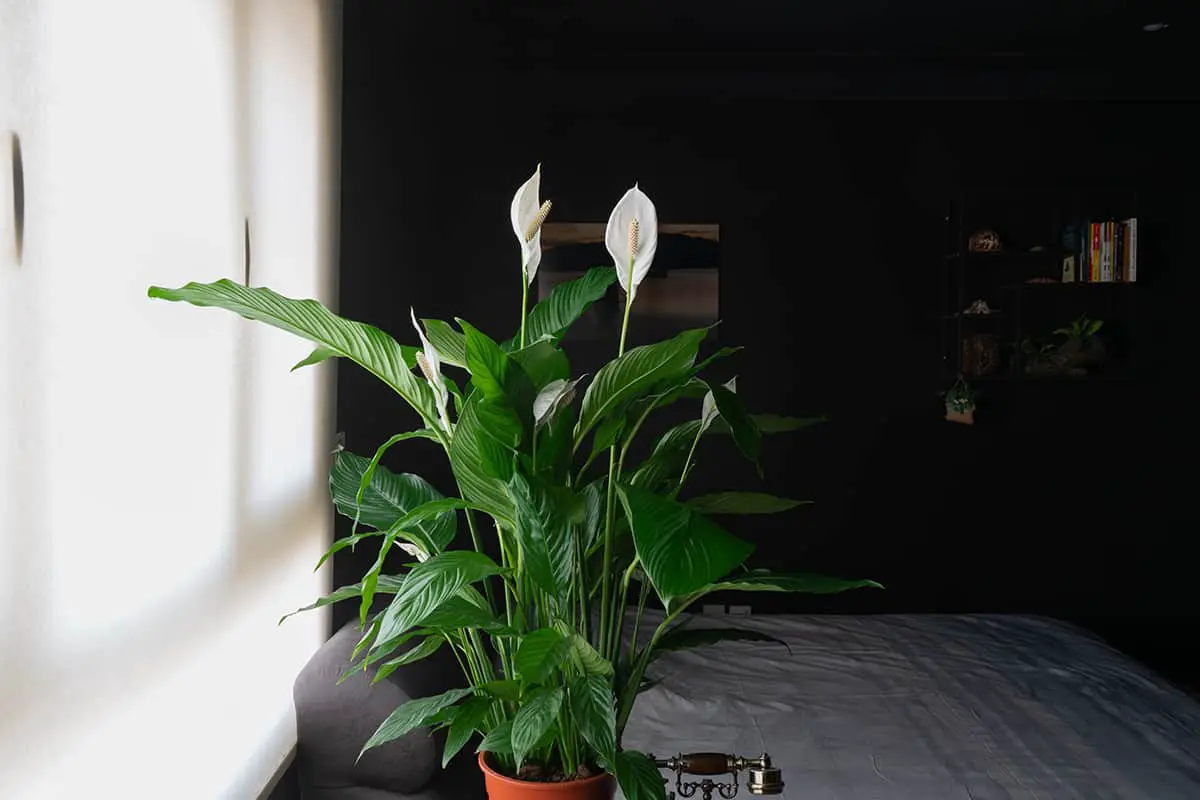
The best temperature for these plants to promote blooming is between 65-80°F (18-27°C) during the day and 60-70°F (15-21°C) at night.
Avoid exposing your peace lily to temperature extremes as they may negatively affect blooming. Sudden fluctuations in temperature can cause stress to your plant, which in turn may decrease flower production.
To protect your peace lily from temperature extremes, it’s important to position it away from direct heat sources like radiators or heating vents. Additionally, you should avoid placing your plant in locations susceptible to cold drafts, such as close to windows or doors.
If you’re growing your peace lily outdoors, make sure to bring it inside when cold weather sets in to ensure its continued health and vitality.
Fertilization
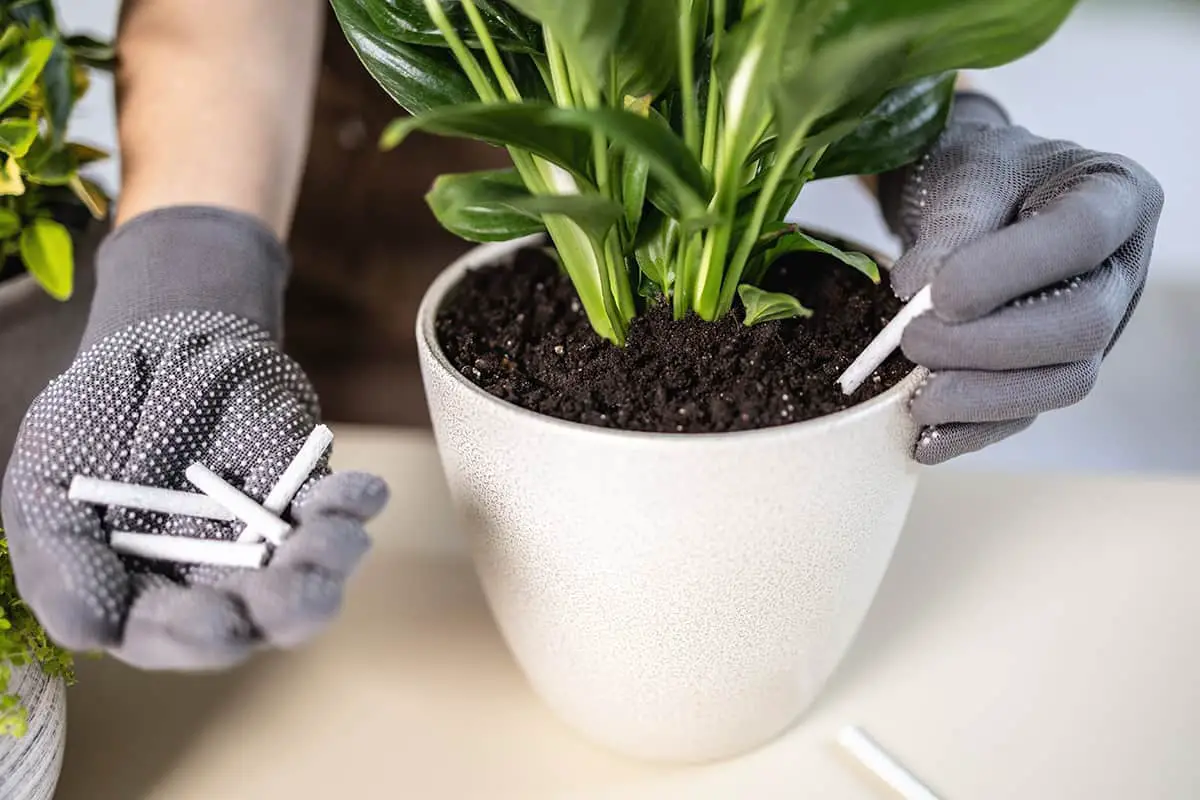
Selecting the appropriate fertilizer is crucial for encouraging your Peace Lily to produce more blooms. Opt for a complete fertilizer that contains nitrogen (N), phosphorus (P2O5), and potassium (K2O). The ideal ratio for peace lilies is a balanced fertilizer, such as 10-10-10 or 20-20-20. Phosphorous, in particular, helps promote blooming, while nitrogen supports leaf growth.
Generally, it’s recommended to fertilize your peace lily every 4-6 weeks during the growing season (spring and summer) and reduce the frequency to every 8-10 weeks during the non-growing season (fall and winter). Apply half or a full rate of the fertilizer depending on the light conditions your peace lily receives. Low-light environments require less fertilizer, while higher-light conditions can accommodate full or more frequent applications.
When applying the fertilizer, be sure to follow the instructions on the label. Overfertilization can lead to excessive leaf growth at the expense of blooms, as well as potential damage to the plant’s root system. By choosing the right fertilizer and sticking to a proper fertilization schedule, you can help your Peace Lily produce more beautiful blooms.
Pruning and Maintenance
Regular Pruning
Regular pruning is essential to encourage more blooms on your peace lily. Remove any yellowing or damaged leaves as they appear. This allows your plant to redirect energy towards producing healthy growth and more blooms. Always use clean and sharp tools for pruning to prevent the spread of diseases and pests.
Removing Spent Flowers
After a peace lily flower fades, trim the flower stalk 1 to 2 inches above the bulb, as mentioned by UMN Extension. Removing spent flowers not only keeps your plant looking tidy but also encourages new blooms to form. Don’t forget to clean your tools after cutting to maintain good hygiene.
Repotting

Recognizing Repotting Signs
A healthy and vibrant Peace Lily produces more blooms. Firstly, you need to identify the signs that your Peace Lily is ready for repotting. If you notice roots poking out of the drainage holes, or if your plant’s growth has slowed down significantly, it’s time to repot. Additionally, if the plant’s leaves are turning yellow or wilting, and the soil dries out quickly, these are signs that repotting is necessary.
Repotting Steps
Here is how to do it step by step.
- Prepare the new pot: Choose a pot that is 1-2 inches larger in diameter than the current one. Fill it with a well-draining potting mix.
- Water your Peace Lily: Water your plant a day before repotting it to ensure the roots are well hydrated.
- Gently remove the plant: Hold the main stem and carefully tip the plant out of its pot, supporting the root ball.
- Inspect and prune the roots: Examine the root ball for any damaged or decayed roots, and trim them using clean, sharp scissors.
- Replant: Place your Peace Lily in the center of the new pot, ensuring that the crown is slightly above the soil level. Fill in the gaps with more potting mix and gently press down the soil.
- Water and care: Water the plant thoroughly and keep it in a well-lit area away from direct sunlight.
Encouraging Blooms with Specialized Techniques
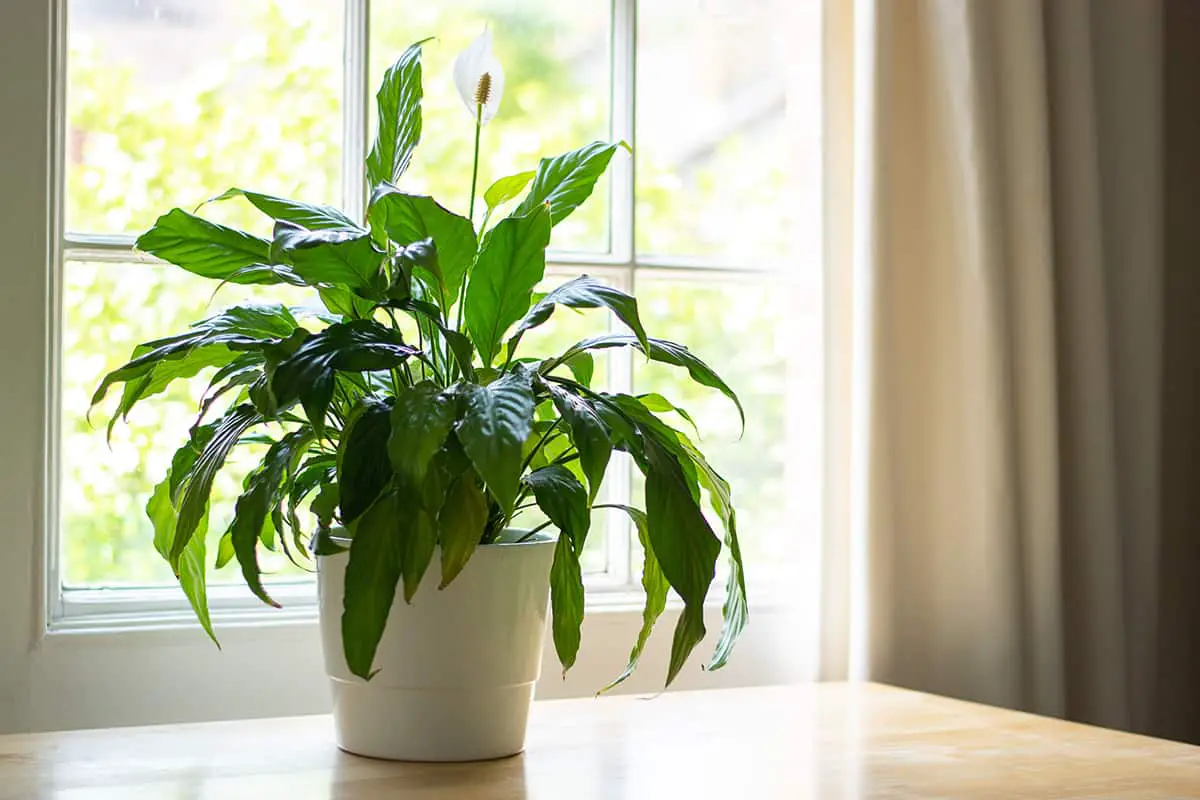
Shock Technique
The shock technique can stimulate your Peace Lily to produce more blooms. To apply this method, simply move the plant to a slightly cooler environment for a short period, typically around a week. Keep an eye on your plant during this process, ensuring that it doesn’t experience extreme temperature drops. The goal is to mimic its natural environment to encourage blooming.
Important: If your plant shows signs of distress, return it to its original environment promptly.
Seasonal Adjustments
Seasonal adjustments can significantly impact the flowering of your Peace Lily. By modifying the amount of light and water you provide, you can encourage blooms. During summer, expose your plant to indirect sunlight, but never direct sun. In winter, reduce the light exposure and water less frequently.
Additionally, fertilizing the plant can also play a crucial role in promoting blooms. Apply a half-strength fertilizer for low light conditions or full strength for higher light conditions. Adjust the quantity or frequency according to your plant’s needs.
Frequently Asked Questions
How often should you fertilize a peace lily to promote flowering?
To promote flowering, fertilize your peace lily every 6-8 weeks. For plants in low light, use a half-strength fertilizer. If the plant receives higher light levels, apply full-strength fertilizer or increase the frequency.
What could be the reasons for a peace lily growing leaves but not producing flowers?
Insufficient light is a common reason for lack of flowering in peace lilies. Place your plant in a brighter area with indirect sunlight. Other factors can be inadequate fertilization, irregular watering, or temperatures that are too low.
How can I encourage a peace lily to flower again quickly?
Optimal care encourages quick reflowering. Ensure your peace lily receives bright, indirect sunlight and consistent watering. Apply fertilizer according to the plant’s light conditions and regularly prune spent flowers.
Why might a peace lily’s flowers turn green, and how can this be corrected?
Green flowers can occur due to age or excessive exposure to direct sunlight. To correct this, move your peace lily to an area with indirect light. If the problem persists, consider adjusting your watering and fertilizing routines.
